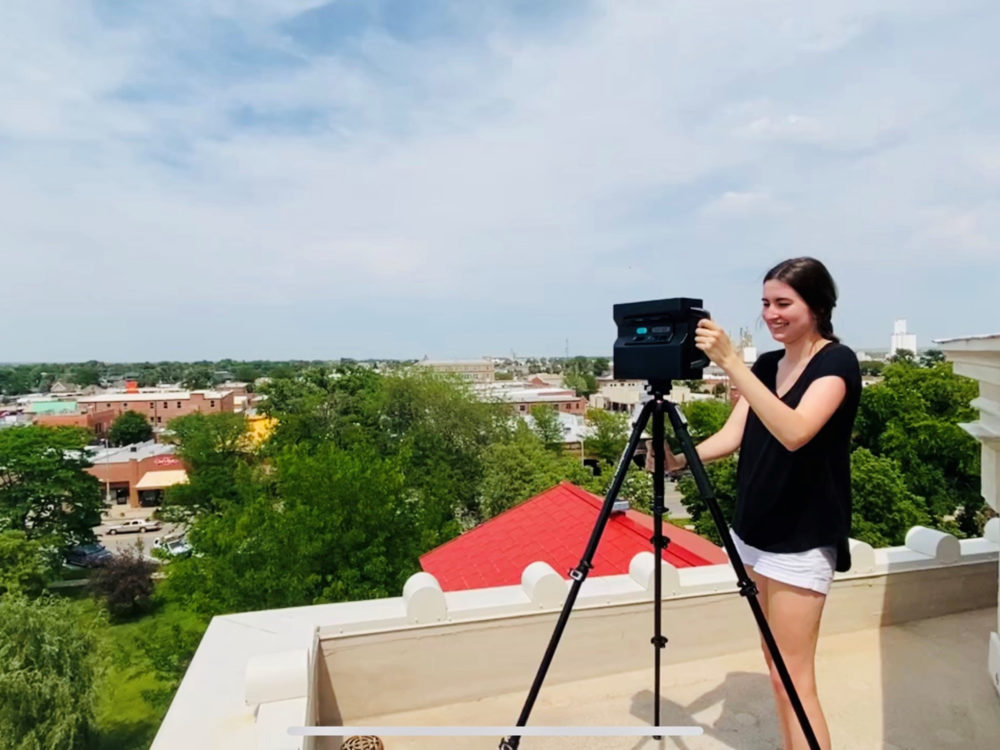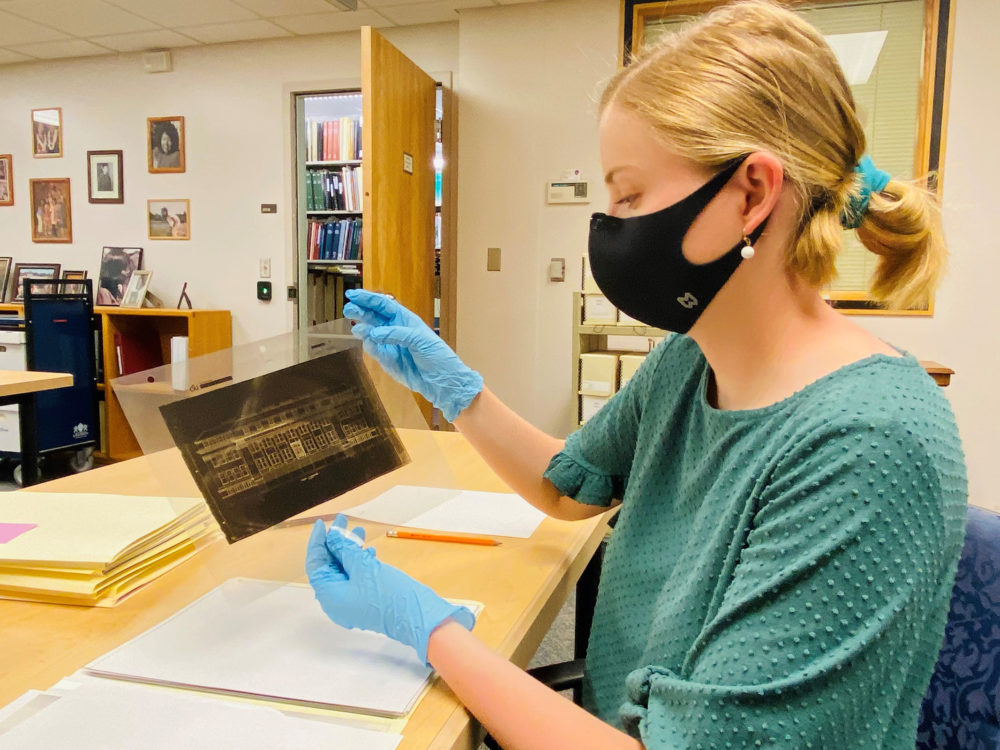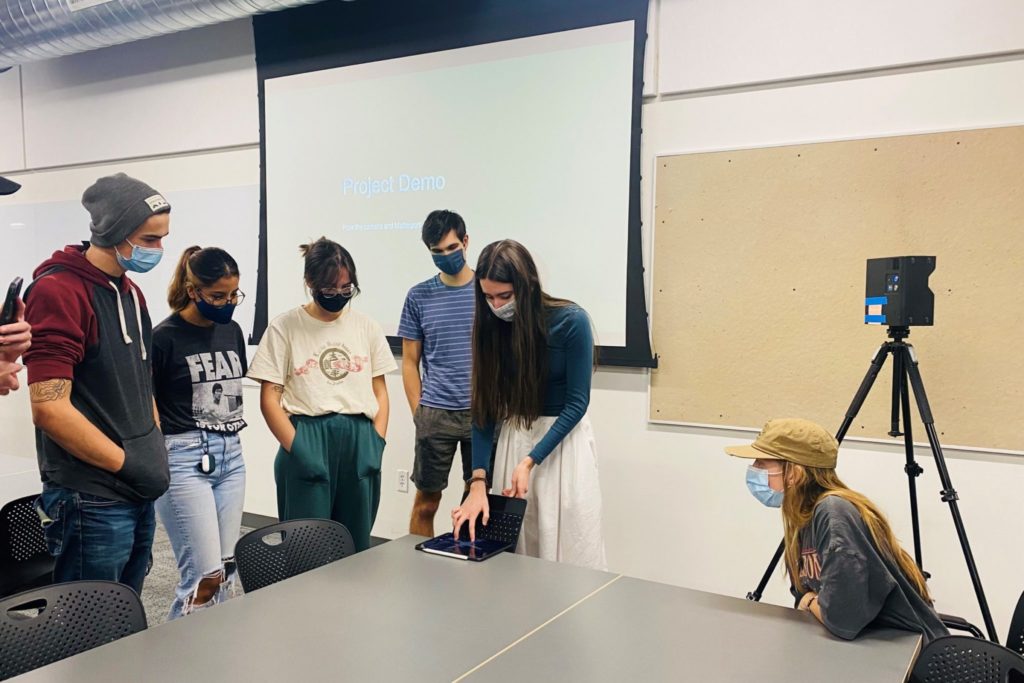
Colorado has a rich history of historic buildings, many we easily pass by with little to no knowledge of their history. Some of Colorado’s most historic buildings are right here on the Colorado State University Campus.
Now, with 3D Matterport technology, these buildings and their rich histories have been documented and are accessible to the public. Assistant Professor Maria Delgado, from CSU’s Department of Design and Merchandising, has collaborated with interior architecture and design students and the Office of Engagement and Extension to share these buildings in an architectural virtual library.
Research interns and interior architecture and design majors Sara Bovaird and Emmalyne Axtell led these documentation efforts in Sterling, Colorado, and on the CSU campus, respectively. They used a Matterport Pro2 3D Camera to facilitate the technology shared in the virtual library.
Matterport technology preserves history
The Matterport Pro2 3D Camera rotates 360 degrees and uses UV and infrared rays to scan buildings. This means the researcher must cover windows and complete exterior shots in the early morning or evening to reduce the light that could interfere with the UV technology.
The data collected from the Matterport camera culminates in the architectural virtual library. As you explore this virtual space, Matterport tags provide more information. The team developed a custom legend for the tours. Gray tags link to published articles. Green tags share architectural materials and features. Gold tags share additional pictures. Orange tags link to the floor plans or other architectural plans for the building. Additionally, 3D tour aficionados can also view the space in “measurement mode” allowing you to see the precise measurements of each of the buildings.
And if you want to do a walking tour of these architectural histories, you can download the Matterport app to your phone to learn more about the buildings. As you walk around the structures, you can compare the space you see in real life to the space on the app and click on the Matterport tags for additional information. Additionally, the Matterport camera documented some spaces not open to the public, so you can view interiors on your app while enjoying the exterior in person.
The Matterport technology has exciting implications for virtual reality enthusiasts. “The buildings were documented with a Matterport Pro2 camera, which scans physical spaces and computes the digital data into a virtual 3D model representation,” said Delgado. “The Matterport interface provides a virtual reality mode which supports the integration of Oculus Quest allowing viewers the opportunity to experience the building virtually.”
This means those with virtual reality headsets or goggles can use that technology to experience a virtual walk through of these historic spaces.
Architectural histories
The Architectural Virtual Library doesn’t just incorporate the 3D technology provided by the Matterport camera. It also includes important information about the original architects and the building’s purpose throughout its long life. The research interns gathered this information by searching through the National Register of Historic Places, a database maintained by the federal government that lists sites, buildings, and structures with historical significance and thus needing preservation. They also gained valuable insights by speaking with the building owners and knowledgeable community members.

CSU Office of Engagement and Extension
The CSU Office of Engagement and Extension financially funded the Sterling internship. The Office of Engagement and Extension’s mission is to deliver on the university’s land-grant mission “by making the university’s educational programs, services and resources accessible to all, enabling individuals to act as agents of change and together build thriving communities.”
Delgado had previously worked with CSU Extension in Sterling to teach high school students Sketch-Up technology. After teaching the course in person for several years, Delgado shifted the course to online through the pandemic, reaching even more students in the process. This previous connection to Extension and Sterling lead to the architectural virtual library project.
Get involved
Delgado hopes this project will have a large and broad reach. “The CSU-AVL website is a resource for the public. Our vision is for the community to explore ways in which the site may be interactive and beneficial,” said Delgado. “For example, teachers can use the site to reinforce the relationship between drawing representation and physical space; use the measure tool to learn and understand ergonomics through STEM exercises; or connect VR headsets to virtually walk through the space.”
Delgado and research interns also hope to use the Architectural Virtual Library to aid in research and inform about how projects like this will be used in the future. The researchers have developed an online survey to share how the page benefits you and the ways in which it is used. You can access the survey link via the CSU Architectural Virtual Library homepage.

The project has also provided incredible opportunities for the undergraduate students involved. Bovaird has shared her research experience through radio interviews and presentations. Bovaird presented in Sterling, CO over the summer and most recently to the CSU campus on Dec. 1 at the Nancy Richardson Design Center.
Sharing the project through multiple outlets have “all been really unique opportunities,” said Bovaird, “that I couldn’t have done without the community’s support.”
The Department of Design and Merchandising is part of CSU’s College of Health and Human Sciences.